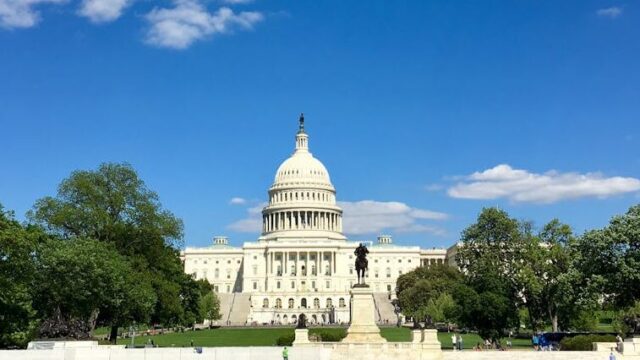Improving access to sexual and reproductive health services requires additional funding
May 2024

BCHC signed onto a letter led by the Family Planning Coalition to urge the House Appropriations Committee on Labor, Health and Human Services, Education, and Related Agencies to improve access to sexual and reproductive health services across the country.
The 57 undersigned organizations urged the Committee to appropriate $512 million for the Title X family planning program, housed in the Office of Population Affairs (OPA) within the Department of Health and Human Services (HHS), $150 million for the Teen Pregnancy Prevention Program, housed in OPA within HHS, $322.5 million for the Division of STD Prevention, housed in CDC within HHS, and $200 million for a new demonstration project to support clinical services related to sexually transmitted infections (STIs) to be administered by the Health Resources and Services Administration (HRSA) within HHS.
Title X
We respectfully request $512 million for the Title X Family Planning Program in FY 2025. Title X is the nation’s only dedicated federal family planning program, supporting a diverse group of providers across the country that offer crucial reproductive and sexual health care. The network suffered catastrophic losses in 2019 and 2020, due in large part to the Trump administration’s 2019 program rule and the COVID-19 pandemic. Data released in September 2021 showed that only 1.5 million people received Title X-supported services in 2020, down 61% from 2018, and six states had no Title X-funded providers for more than two years. In 2022, the OPA received $336.5 million for Title X – $286.5 million through the regular appropriations process and $50 million in one-time money from the 2021 American Rescue Plan Act – and was able to significantly restore access for the first time since 2019. Even with those additional temporary funds, the network still served fewer people than it did in 2018 – 2.6 million people versus 3.9 million people five years earlier, before the Trump rule and the COVID-19 pandemic.
Title X needs substantial federal investment to continue rebuilding the network and to expand access to publicly funded family planning and sexual health services. However, since FY 2014, Title X has been flat funded at $286.5 million, $31 million less than it was in 2010 and without any adjustments for inflation. This lack of increased funding has made it impossible for program administrators and providers to meet the growing need for publicly funded family planning and sexual health services. People seeking care across the country continue to rely on Title X clinics for many of their health care needs. In many communities, Title X providers are often the only source of health care for people with no or low incomes, and 60% of female patients seeking contraception at a Title X-funded health center say it is the only health care provider they see all year. Further, the impact of a lack of increased funding will also disproportionately impact Black, Indigenous, Latina(o)(x), Asian American and Pacific Islander and other people of color. Data shows that of the 2.6 million family planning users in 2022, 31 percent identified with at least one of the non-white categories, and 37 percent identified as Hispanic and/or Latino. For more than 50 years, Title X has continued to provide necessary family planning services to millions across the country, many who otherwise may not have had access to these critical services.
Teen Pregnancy Prevention Program
We respectfully request $150 million for the Teen Pregnancy Prevention Program (TPPP). Since 2010, TPPP, along with the complementary Personal Responsibility Education Program (PREP) have been recognized as pioneering examples of tiered, evidence-based policymaking. The first two five-year cycles of grants and associated evaluations made vital contributions to building a body of knowledge of what works for whom and under what circumstance to prevent teen pregnancy. This has meant high-quality implementation, rigorous evaluation, innovation, and learning from results.
Since the early 1990s there have been steep declines in teen pregnancy and birth rates, across all racial and ethnic groups and in all 50 states. Yet disparities persist by race, ethnicity, age, and geography. TPPP has addressed these disparities by focusing funds on communities and populations with the greatest needs. Due to limited resources, the critical sexual health information provided by TPPP is out of reach for many. Originally funded at $110 million, the program has been funded at $101 million since FY 2014. In 2023, OPA awarded TPPP grants to support 71 five-year projects across the country, but their continuation is contingent on annual appropriations. Increased funding would also ensure more young people receive the evidence-based information they need to live healthy lives and attain the goals they set for themselves.
STI Prevention
We respectfully request $322.5 million for the Division of STD Prevention at the CDC. Federal funding for STI prevention has remained stagnant for nearly two decades, leading to a 40% reduction in the purchasing power of STI prevention programs in that time and impacting their capacity. This lack of investment has had dire impacts on STI rates. In 2022, the United States breached 2.5 million reported cases of syphilis, gonorrhea, and chlamydia, with the highest rates of syphilis we’ve seen since the 1950s. Research demonstrates increased funding for STI prevention lowers STI rates, and cuts to jurisdictions’ funding have allowed STI rates to increase. Jurisdictions need adequate funding for education, partner services including contact tracing, and other prevention tactics to reverse the trend in the STI epidemics.
STI Clinical Services
We respectfully request $200 million for a new demonstration project to support STI clinical services. It is estimated that there are nearly 68 million sexually transmitted infections every year in the U.S., with a financial toll of $16 billion in lifetime direct medical costs. Although STI screening and treatment are forms of STI prevention, there is not a funding mechanism to support these clinical services. The demonstration project at HRSA will ensure providers are fully equipped to provide comprehensive STI testing and treatment in their communities and will include a rigorous evaluation to determine outcomes. Along with addressing other STIs, this funding is particularly critical to lower skyrocketing rates of syphilis in newborns. Congenital syphilis–which can cause lifetime disability and death–is known as a disease of access; it is preventable with timely testing and treatment. Yet, the CDC recently reported a 937% increase in congenital syphilis in the last decade. Further, the increased rates of maternal syphilis have disproportionately impacted Indigenous and other women of color.
Read the full letter
Download now Read the full letter

